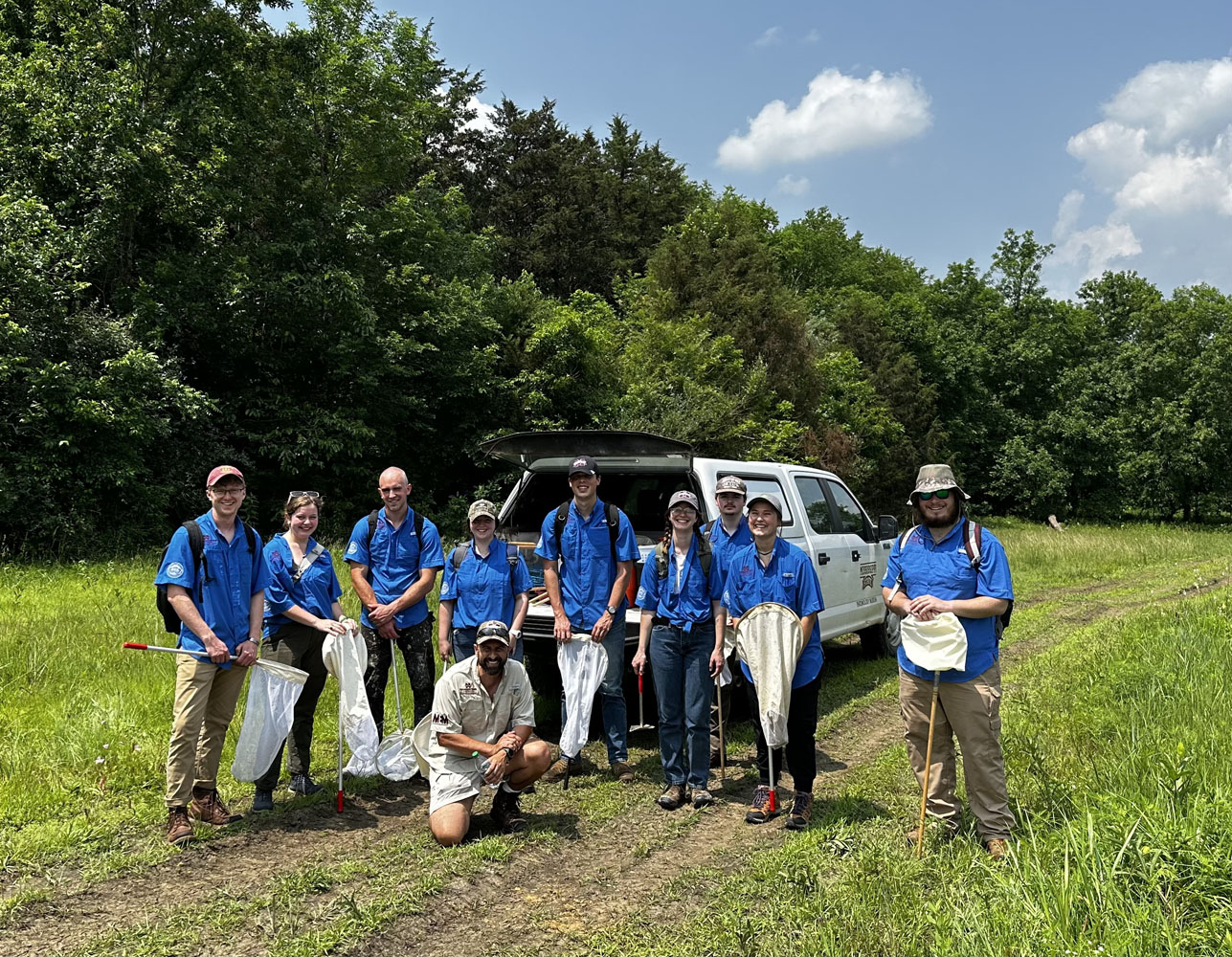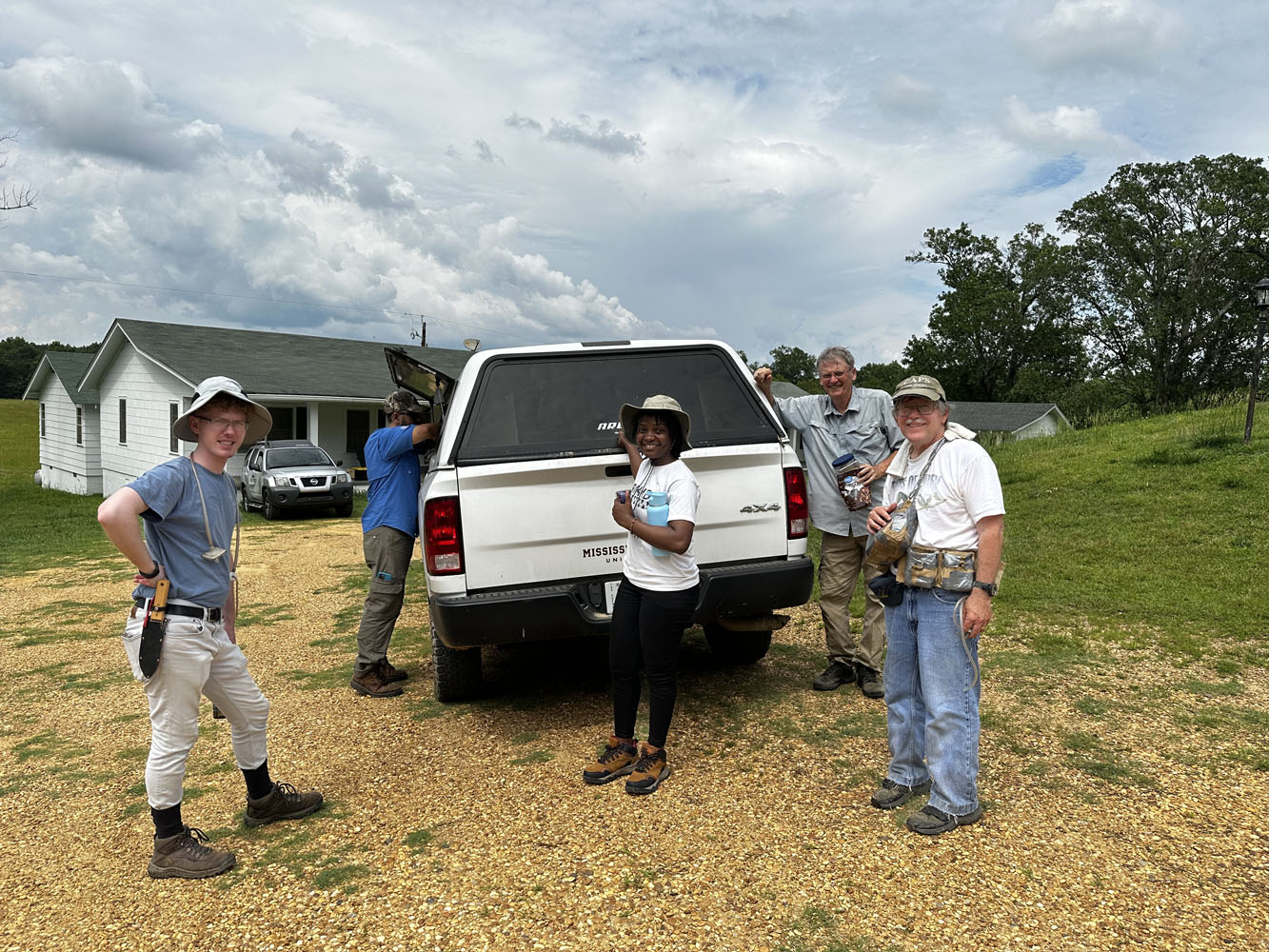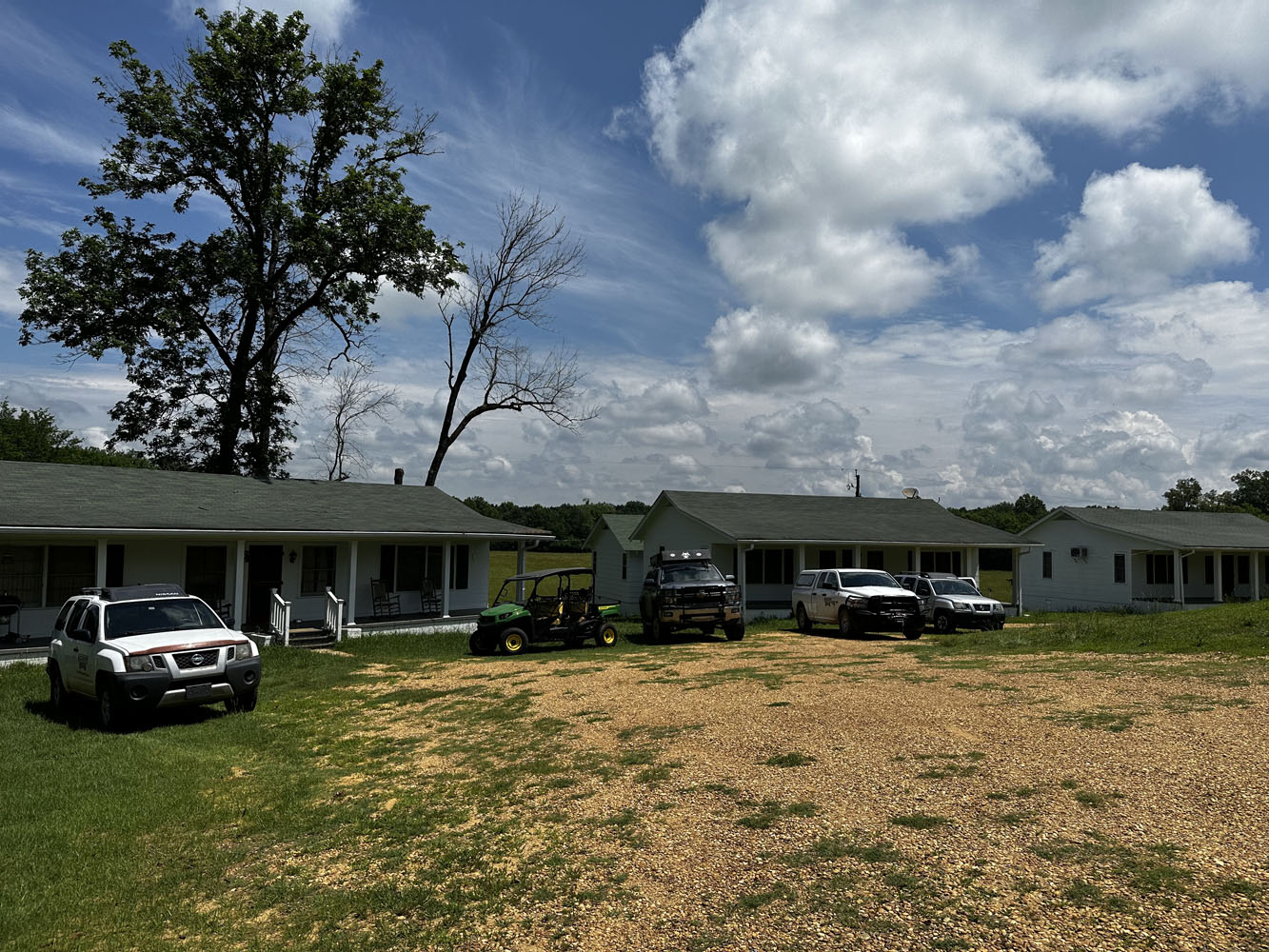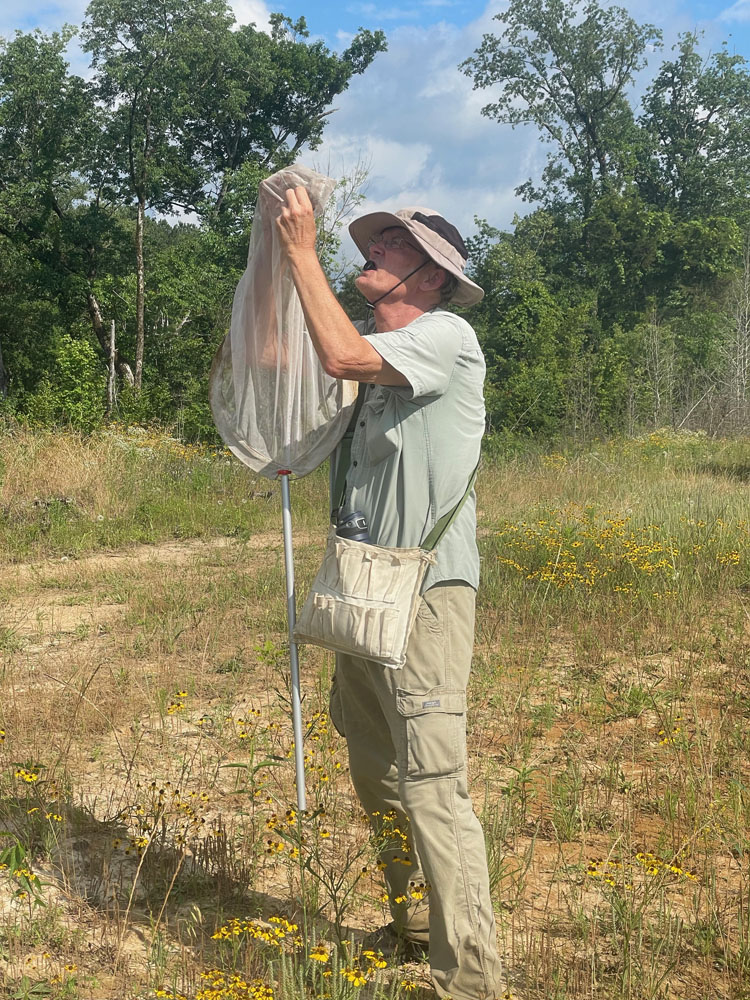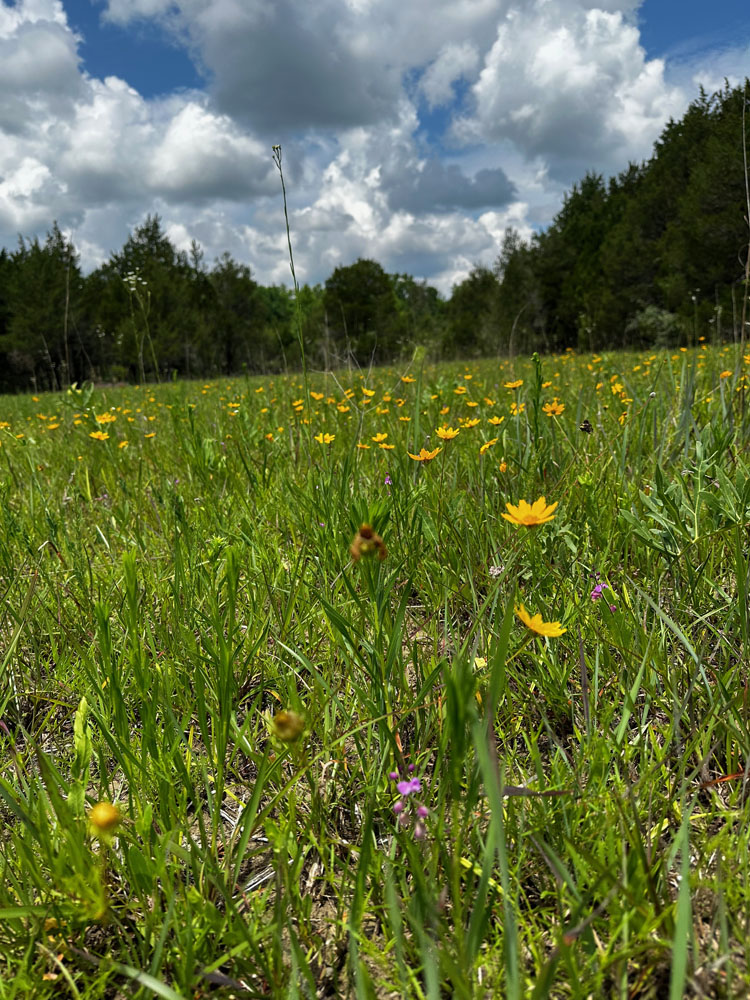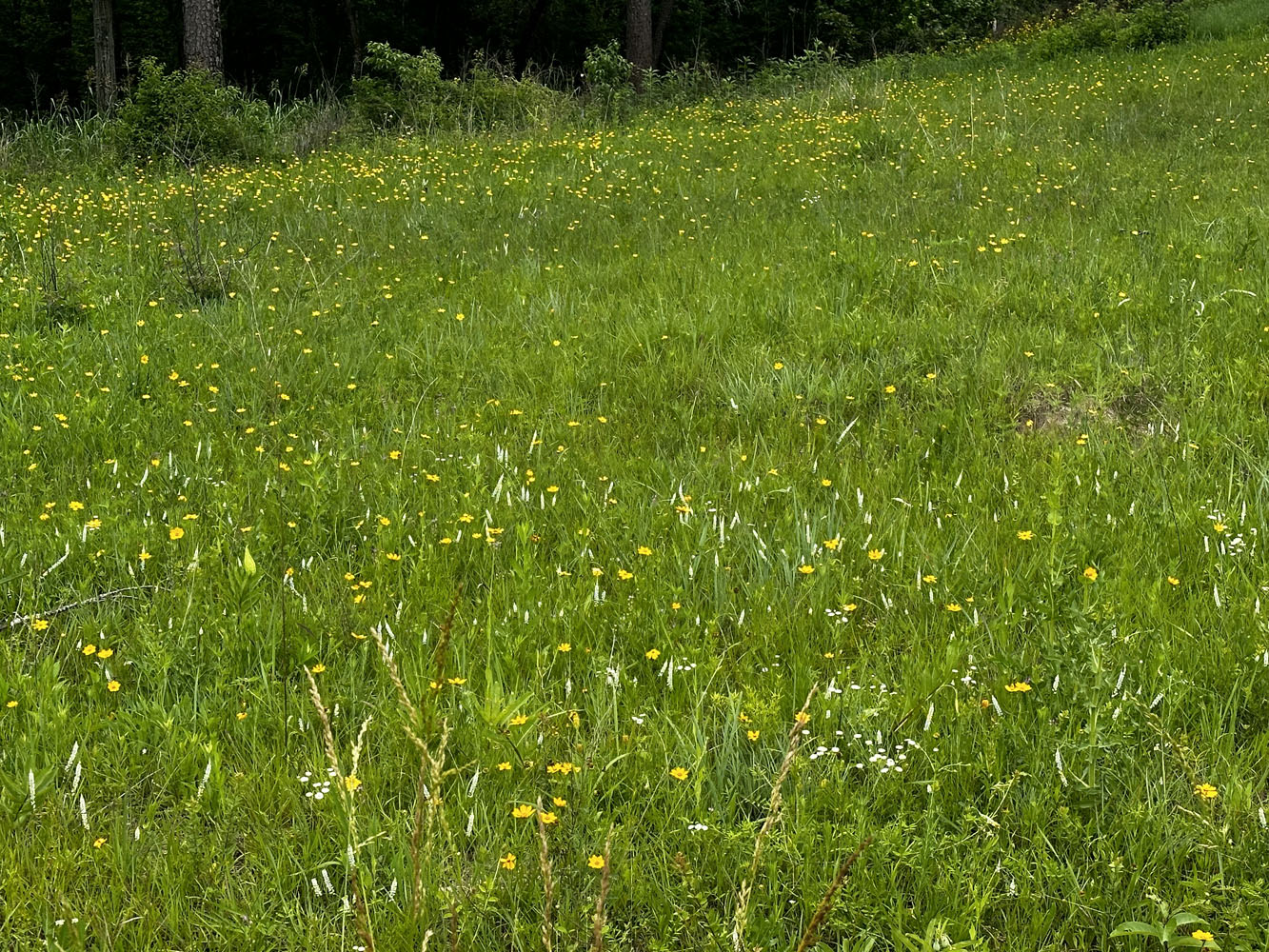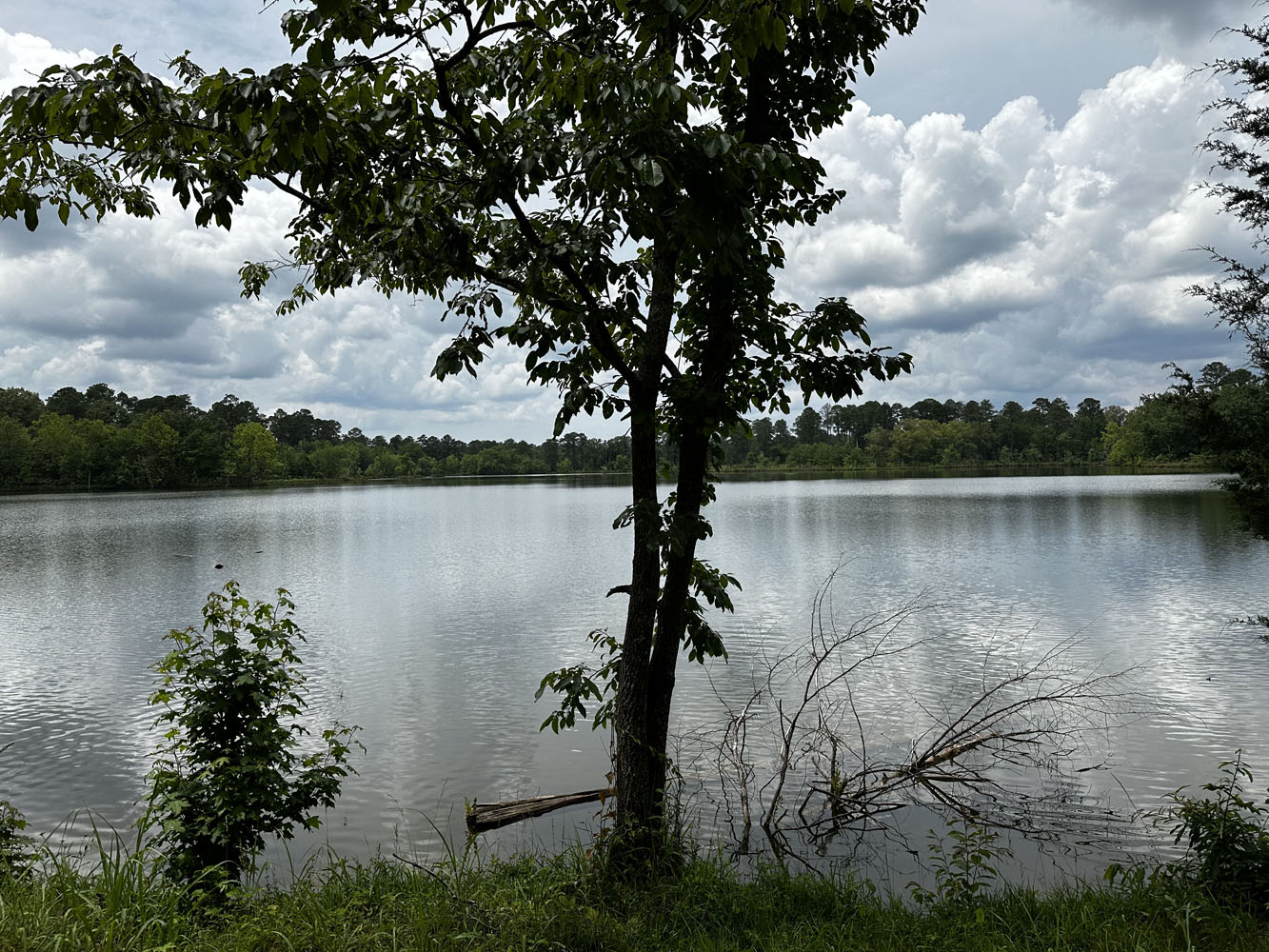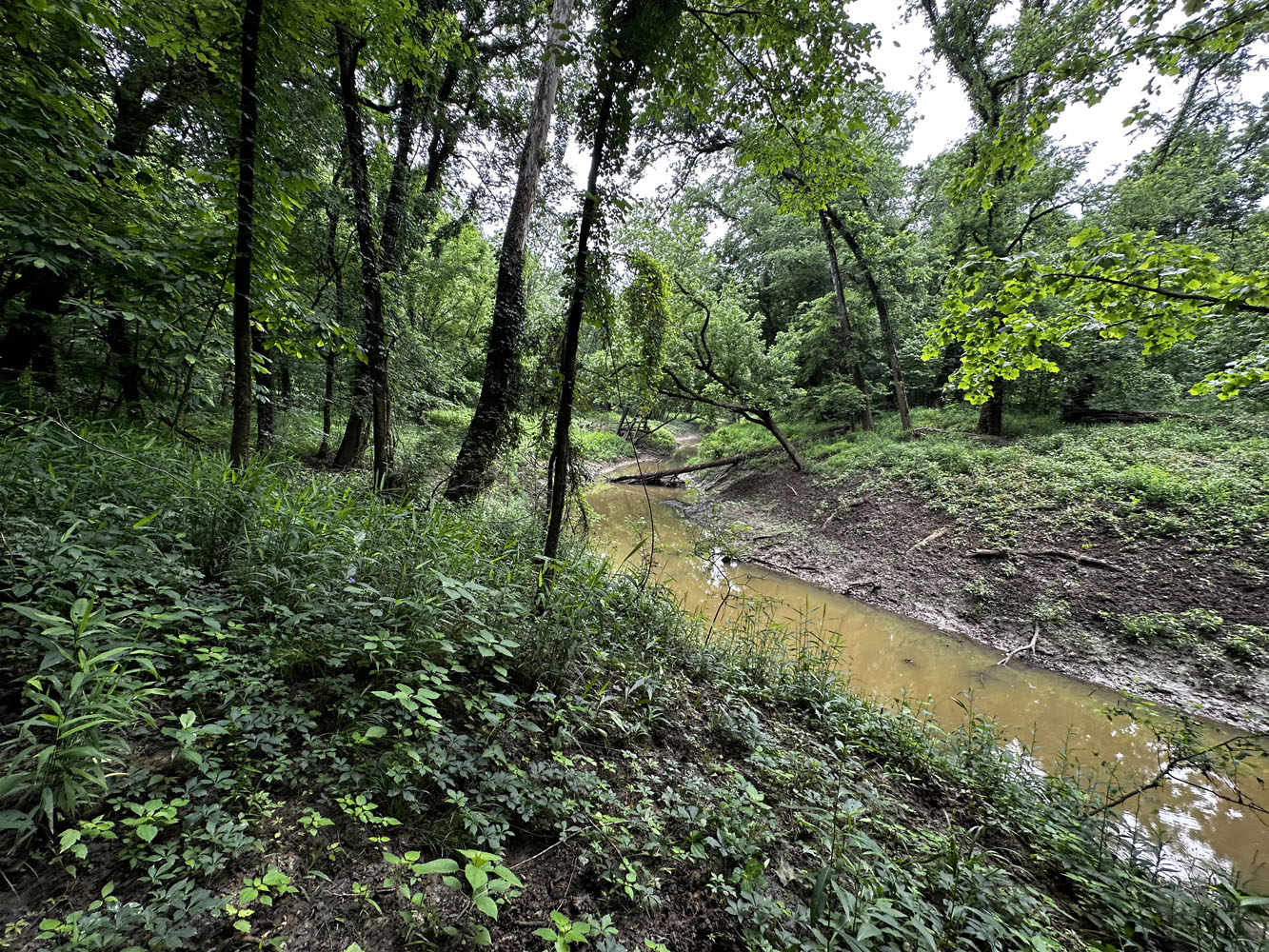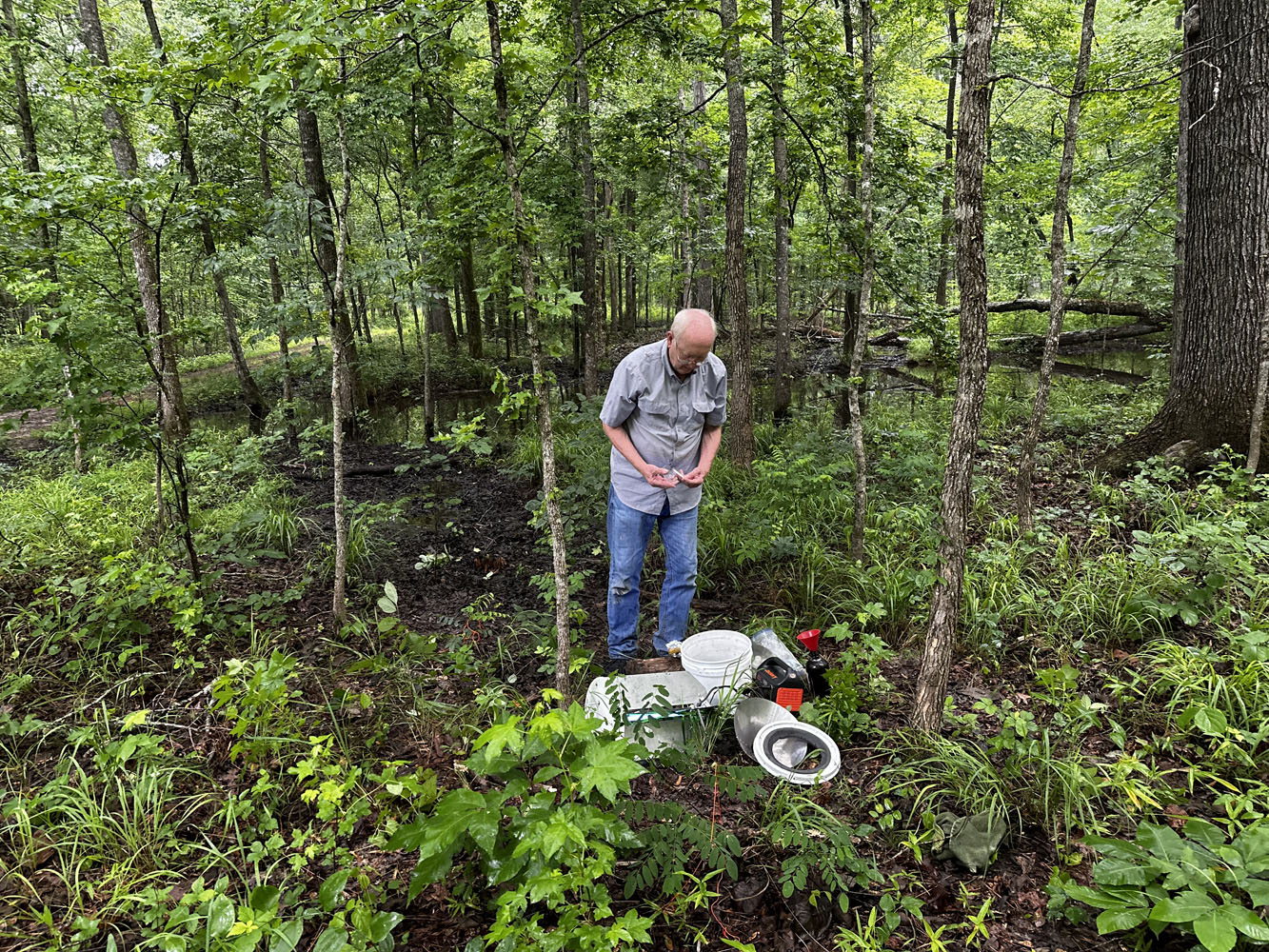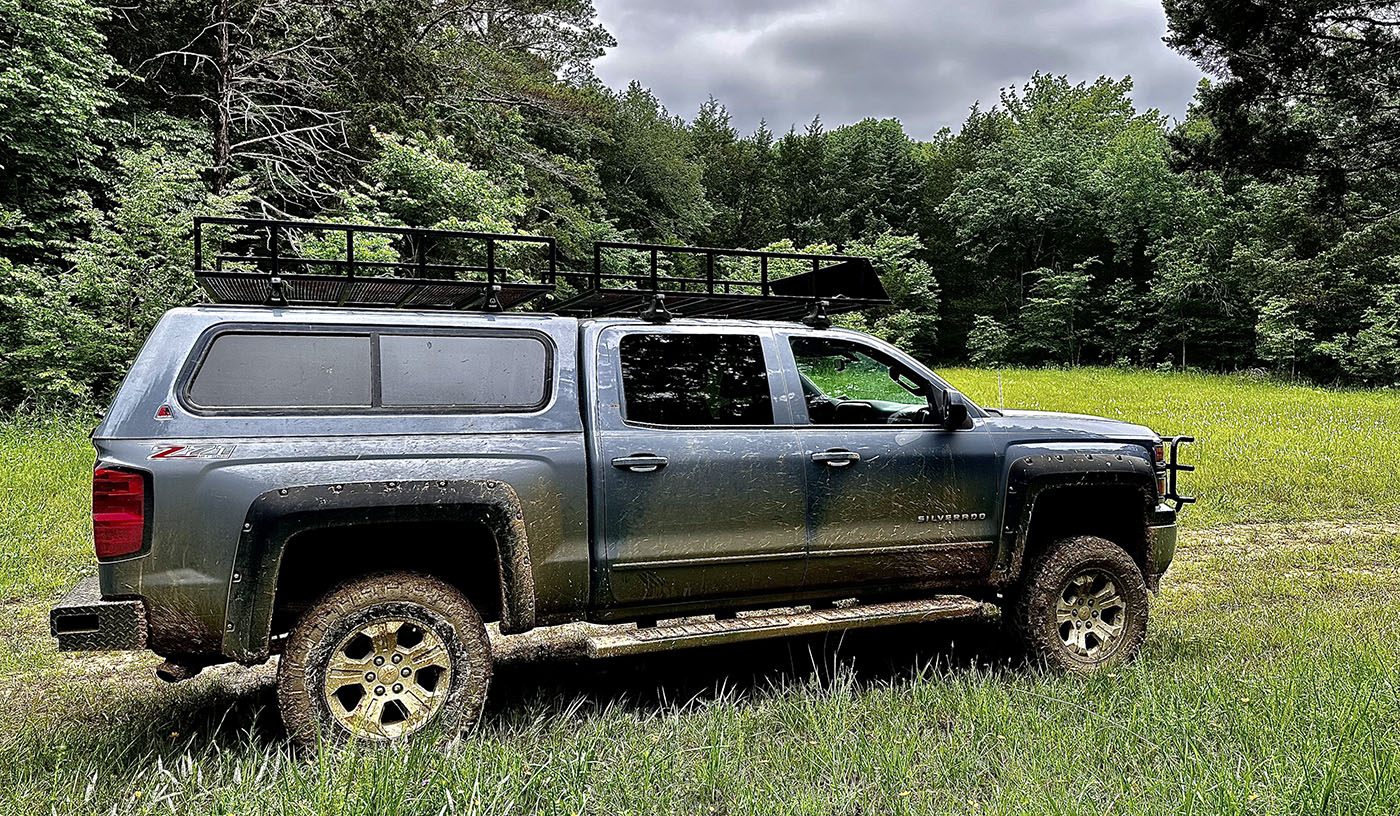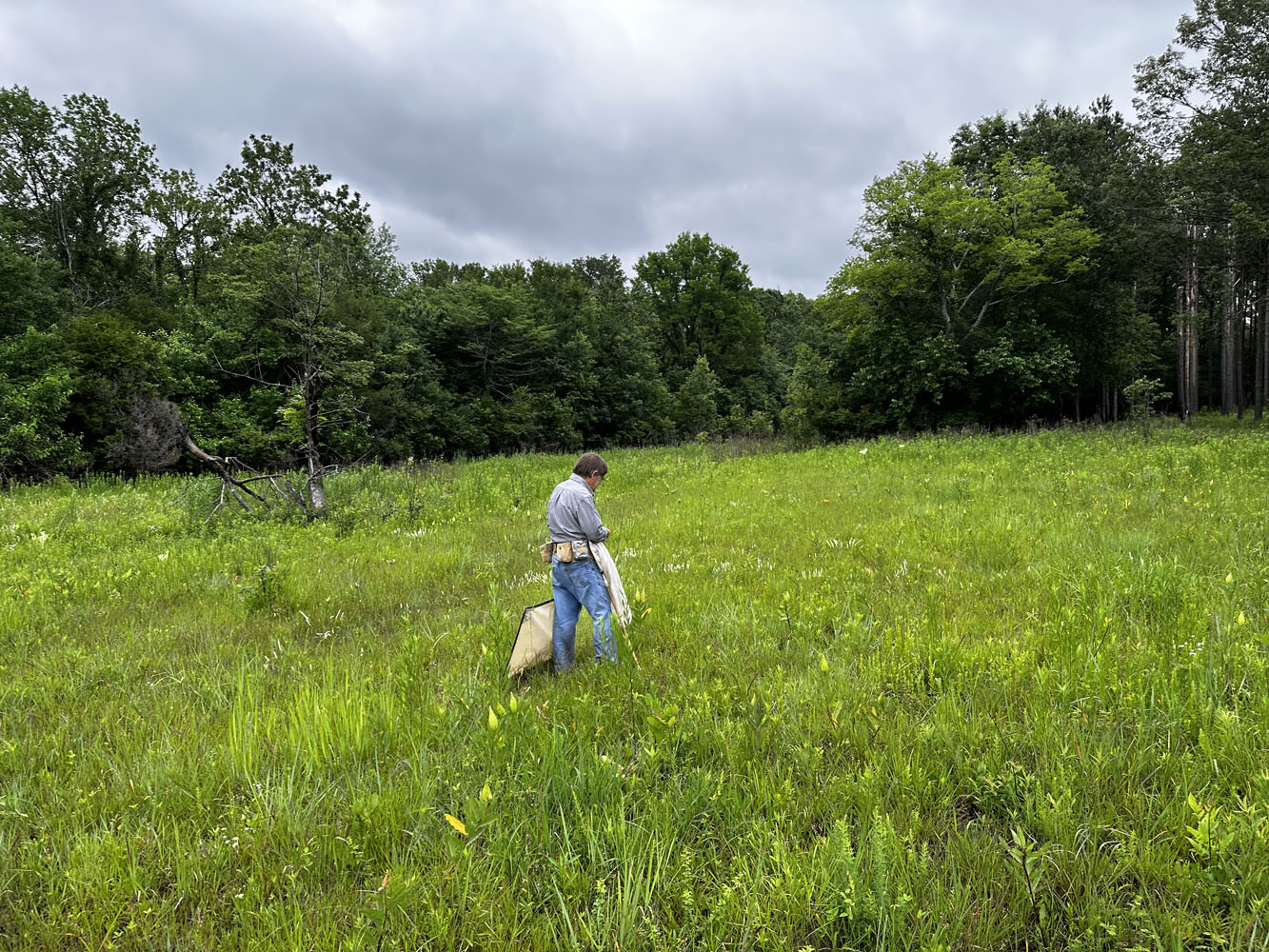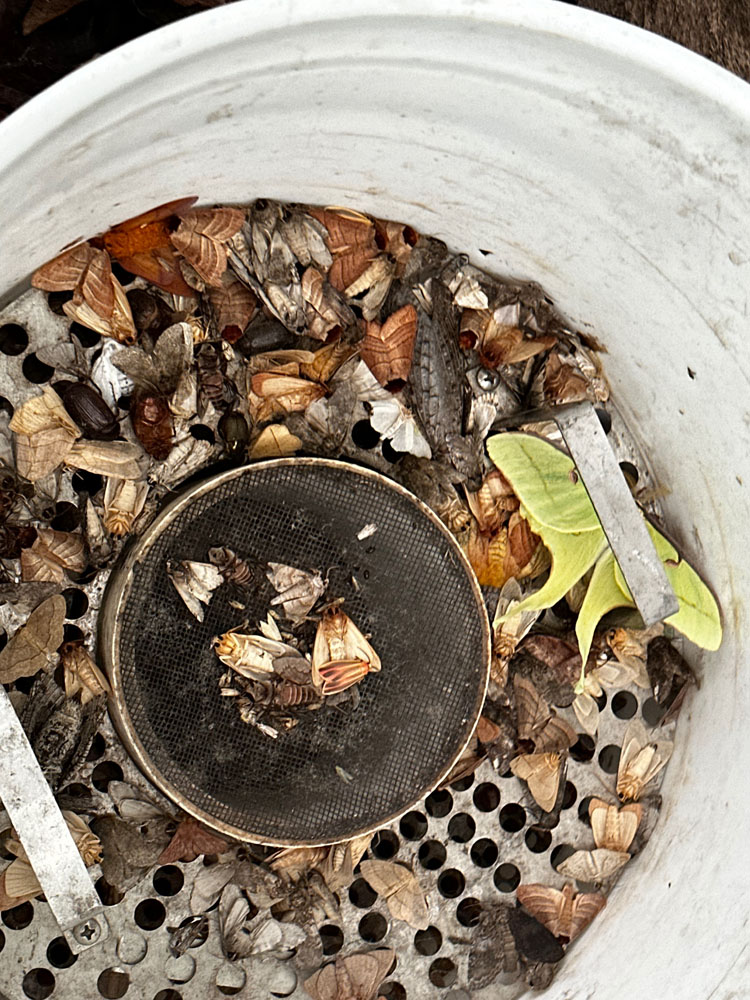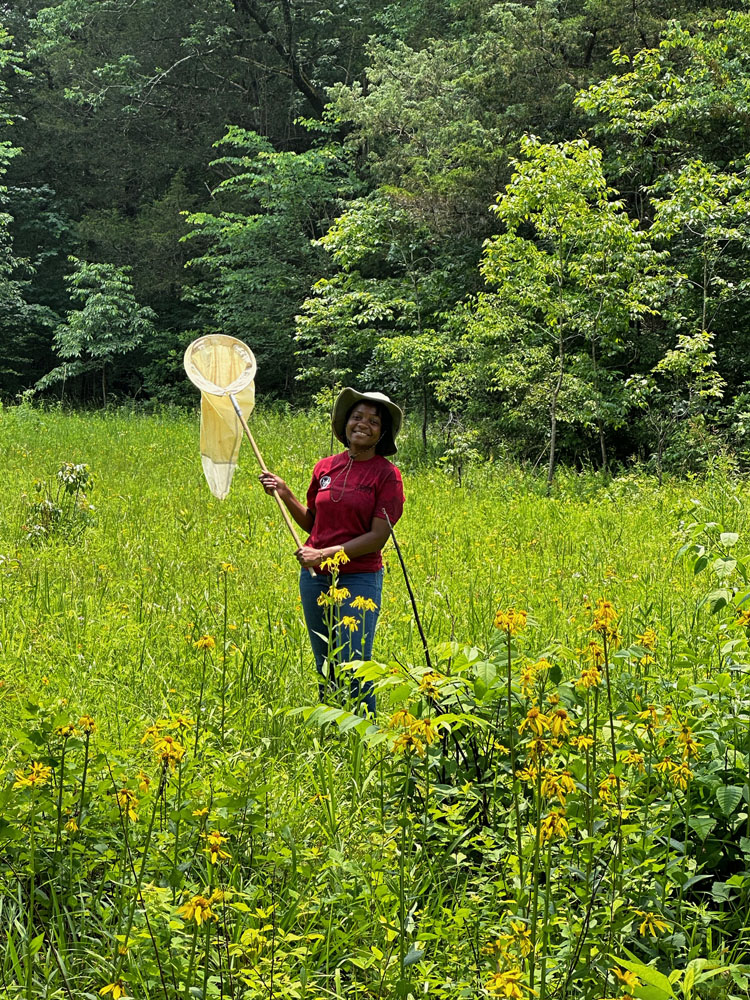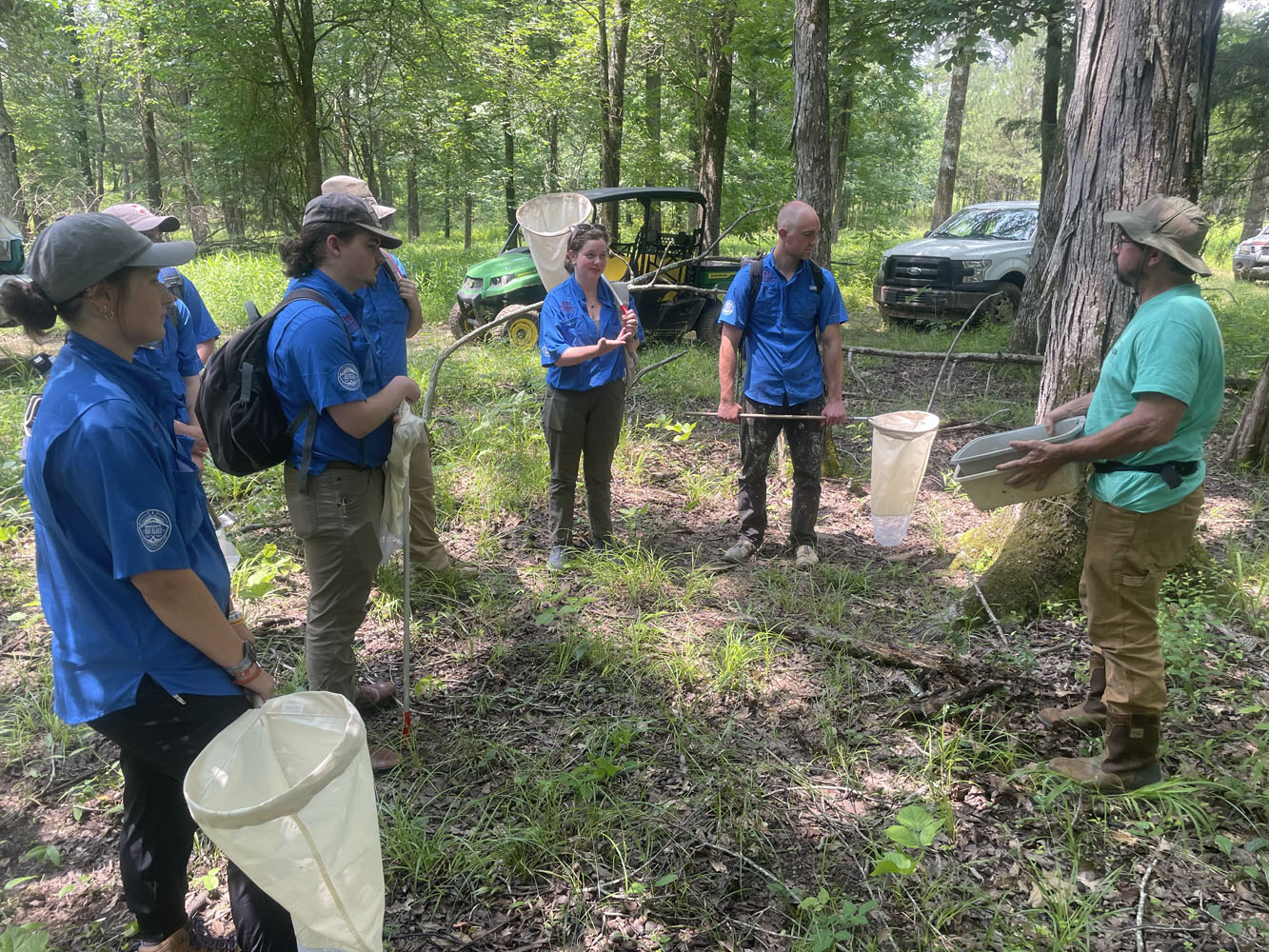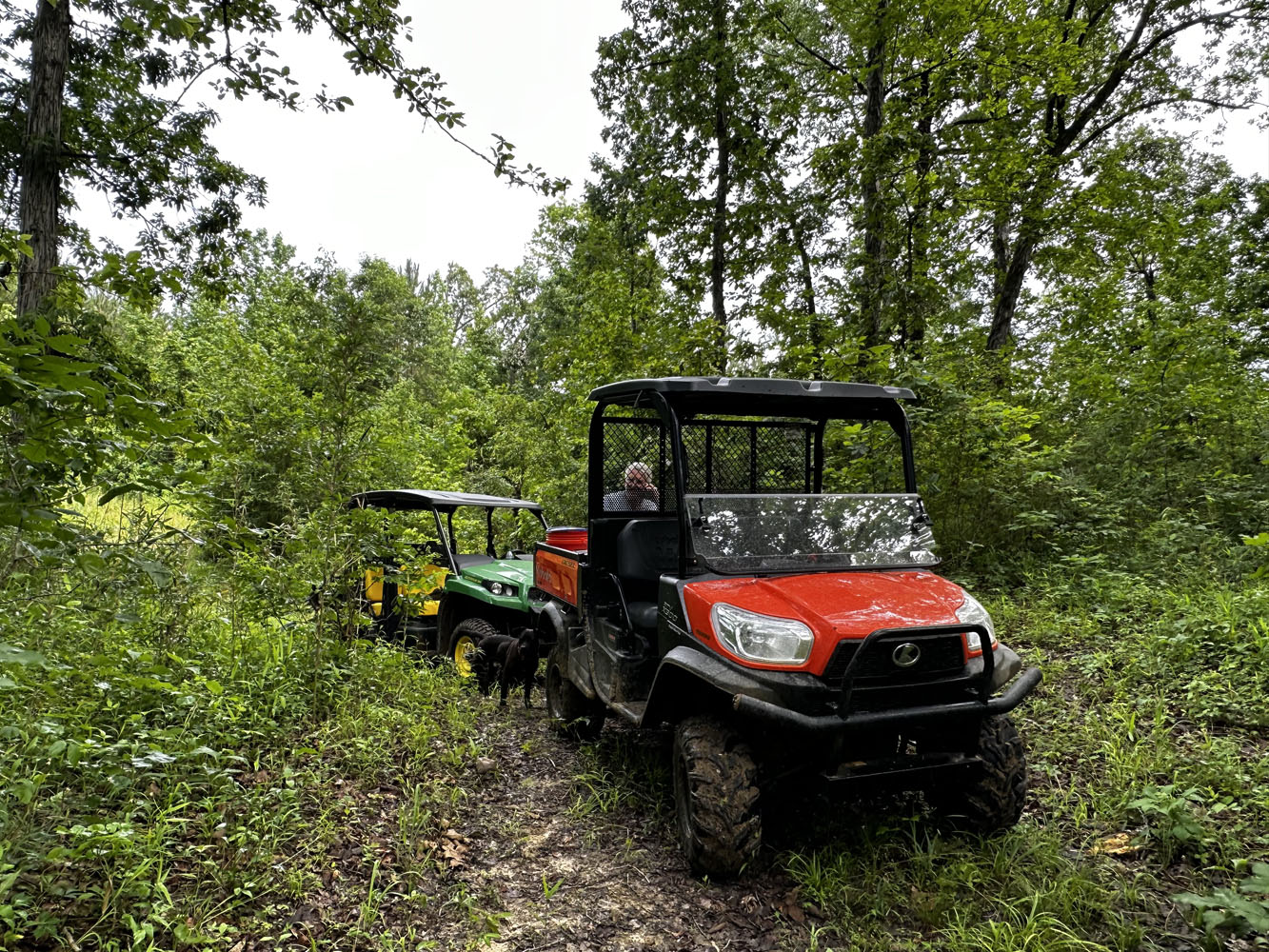William H. Cross Expedition to the Sumter County Farm in Sumter County, Alabama, May 22–26, 2023
by J. A. MacGown, uploaded on 8 August 2023
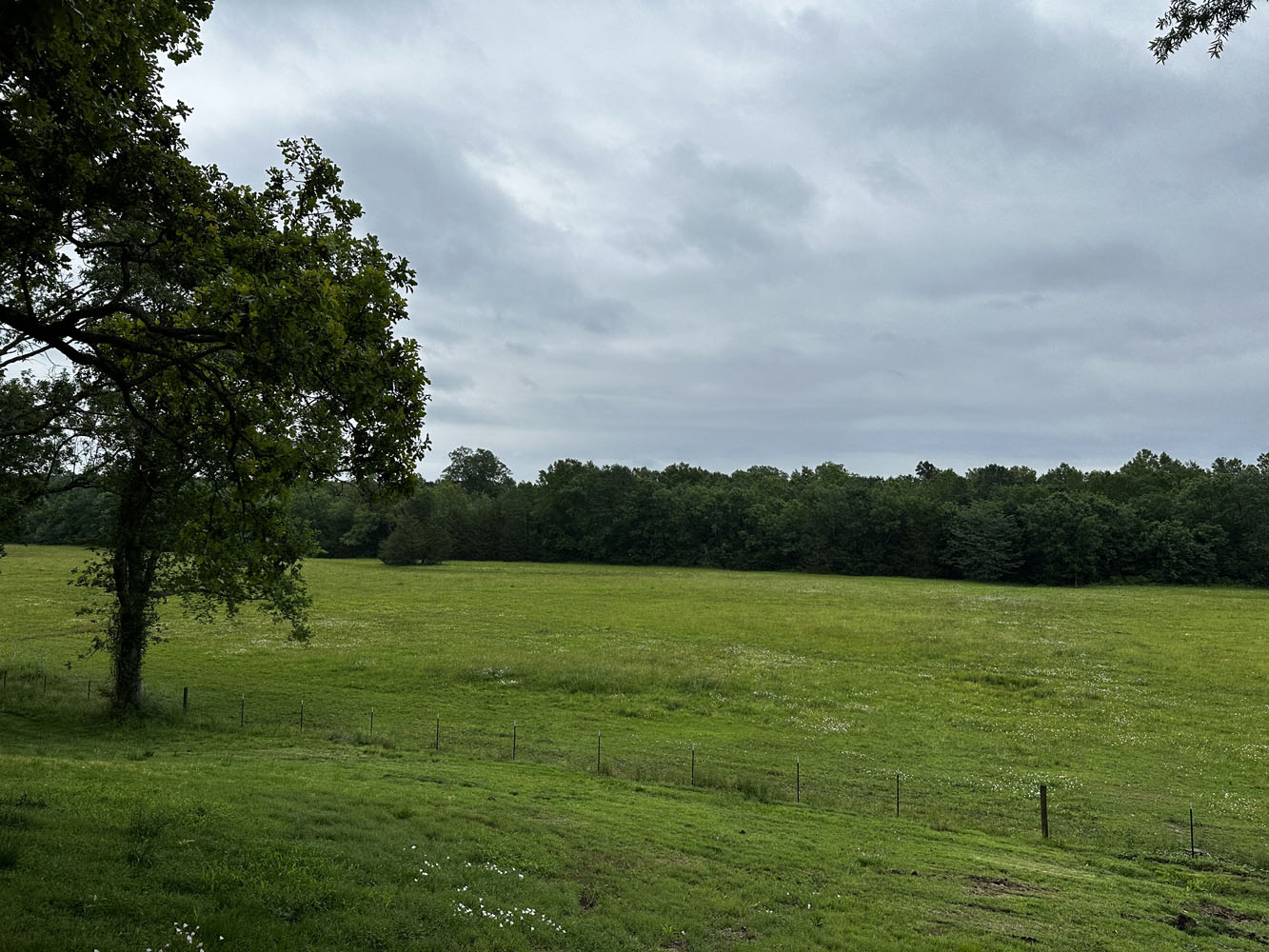
Pasture-land at the Sumter Farm is plentiful
The 2023 William H. Cross Expedition took place from 22 to 26 May 2023 at the privately owned Sumter Farm located in Sumter County, Alabama. The Sumter Farm, owned by Hazel and Mitchell Bell, is an 11,000-acre plus tract of land comprised of a variety of habitat types including some large Black Belt Prairie tracts, upland and bottomland forests, pine forests, and plenty of pastureland. With numerous lakes and abundant wildlife, the property is ideal for outdoors oriented people who love to hunt and fish, but also a wonderful place for scientists to explore and document the flora and fauna. The Bell family has been more than gracious in accommodating scientists who visit, and they are enthusiastic about learning as much as possible about the natural history of this extensive property. During our stay for the Cross Expedition, we were housed in guest cabins and had most of our meals in a large lodge.
JoVonn Hill (kneeling) with several members of our screening center.
Zach, JoVonn, Jireh, Charles, and Terry ready to begin collecting.
Participants for the expedition included JoVonn G. Hill (MEM director, grasshopper specialist), Richard Brown (MSU emeritus professor, Lepidoptera specialist), Joe MacGown (MEM, retired, ant specialist), Terry L. Schiefer (MEM curator and wood-boring beetle expert), Charles Ray (research associate, native bee expert), Zach Brown (MEM, Master’s student, ants), Jireh Mwamukonda (Master’s student working with grasshoppers), John MacDonald (botanist and butterfly expert – only present on 25 May), Charles Bryson (botanist, hesperiid expert, only present on 25 May), John Bawley (25–26 May), Philip Barlow (25, 26 May) Jennifer Seltzer (Screening Center Coordinator, 26 May), and various MEM students who joined us on 25-26 May.
The cabins were perfect for our stay!
Monday, 22 May 2023. As in past expeditions, our first order of business upon arriving was unloading our gear, then setting up for a few days of collecting. Typically, we also set up a variety of passive traps (e.g., Malaise trap, Lindgren funnel traps, etc.), but Museum staff already had traps in place on the property, which had been in use for several months, so we did not put out any more of these traps. We did, however, place several Berlese funnels out on the front porch of the cabin.
Zach with a sifting pan, about to search for ants.
Many of our Cross trips have required a several hour drive, but the Sumter Farm was only about one hour from the Mississippi Entomological Museum (MEM). Because it was nearby, we were able to do more day collecting right away. The general habitat surrounding the cabins and lodge was mosly pastureland, but with some scattered old hardwoods and enough wildflowers along edges to attract the attention of both bees and Charles! Of course, we examined the trees and ground to see what ant species were present. Having collected here in the past, we already had a pretty good idea of the ant fauna, but it is always worth looking again!
Charles Ray, collecting a native bee.
As soon as everyone was ready, we hopped into the trucks and headed to an incredible Black Belt Prairie site called “Wild Horse Prairie.” Mitchell (Bell) and his crew have been doing an amazing job opening up the prairie sites on the property by regular burning and removal of cedars. As a result of their labor and vision, they now have some of the largest and most diverse prairie remnants in the region.
Black Belt Prairie with numerous wildflowers
A beautiful Black Belt Prairie remnant.
We spent a good bit of time collecting at the prairie, searching for pollinators of the numerous flowers, grasshoppers, and ants. After a couple hours, we separated into smaller groups with some staying at the prairie site and others headed to more forested localities on the property. I went off on my own to grab some litter samples to put in the Berlese funnels. My first stop was near Sumter Lake, one of several beautiful large lakes located on the property. My next spot was a mesic hardwood bluff site, which was quite different than most of the property with nutmeg hickories and various oaks. A steep ravine led to the Noxubee River below and the associated floodplain forest habitat including a nice stand of pawpaw trees! The litter samples looked rich and promising, though later after looking through those samples, the ant species collected were not as diverse as I hoped.
Sumter Lake, one of several large lakes on the property.
Sloped floodplain forest with the Noxubee River running through it.
After getting several litter samples, I headed back to the cabin to begin the Berlese process and to grab food before heading back out. Terry joined me and we headed out looking for potential spots for him to beat dead and dying trees in search of long horned beetles and other wood boring beetles. Beating limbs of dead and living shrubs and trees is also a great method for collecting various beetles and arboreal ants, such as carpenter ants (Colobopsis, Camponotus spp.) and twig ants (Pseudomyrmex spp.). This beating method is a two-part collection with the collector holding a light colored, square beat sheet (often canvas, about 30 inches wide, with wooden supports forming an “X) in one hand, and firmly beating the vegetation over the beat sheet with a solid stick or often a net handle. As insects land on the sheet, they are quickly collected by hand or with an aspirator. Don’t wait long, because winged creatures are apt to take flight!
By the time we got back, Mitchell had started preparing a wonderful supper for us. The Bells were amazing hosts during the entire week, and they made both supper and breakfast for us each day of the trip! Following dinner, we headed back out for night collecting activities. Richard and I placed a bucket trap with a UV light in a low wet area. Bucket traps are passive traps that run throughout the night with night flying insects, especially moths, being attracted to the UV light (powered by a battery). The insects that find their way into the trap are killed by ethyl acetate fumes or other killing agents such as cyanide. The following morning, we retrieved the bucket trap and were happy to see that it was full of numerous moth species and other insects.
Richard Brown setting a bucket trap with UV light in a rich bottomland forest.
While we were setting up the bucket trap, the others put up three sheets with UV lights up at the bluff site. By the time we joined the others, it was already dark. Insect activity at the sheets was on the low side, but both Terry and Richard found enough small beetles and micro-Lepidoptera to keep them busy. I headed back early, to label my various collections, and the others arrived later.
Tuesday, 23 May 2023. Richard and I started the day by picking up the bucket trap. My four-wheel drive truck was a necessity as the route to our collecting spot was very wet and muddy. In fact, without four-wheel drive vehicles, many of the sites we ventured to during the week would have been inaccessible. After carefully and slowing navigating our way back, Richard began the day long process of sorting through the bucket trap. Before getting started with our day collecting adventures, we were treated by a full-scale breakfast in the lodge! Wow!
The vehicles stayed muddy this week!
Similar to Monday, we did not have planned excursions to specific parts of the property, but rather, folks went out individually or in small groups to collect in areas that might be productive for their particular interests. Other than blacklighting events during the night, this was the pattern for the rest of the week as well. Of course, the high-level prairie spots were a draw for everyone all week. The MEM has several ongoing projects including grasshopper studies, ant surveys, and pollinator studies that all tie in well to open areas such as Black Belt Prairie remnants. Our resident bee expert, Charles, was particularly enthusiastic about collecting bees as they foraged on the many native wildflowers. Jireh and Zach also spent a good bit of time at the prairie sites. I wandered around looking for ant colonies, although having collected here before, I did not find anything new. I did see numerous colonies of Forelius sp. B., a common ant in open areas of the Southeast in a group that needs taxonomic revision. I have started working on that project, so am always glad to pick up additional specimens. I also grabbed a leaf litter sample from the base of a large cedar tree (Juniperus virginiana) that was at the edge of the prairie.
Terry Schiefer looking for beetles at a prairie site
Later, Terry joined me as we looked for wooded areas to collect, with him beating and looking on flowering vegetation and me looking for ants and possible leaf litter collection sites. The litter sampling here was not as productive as some natural areas we have visited. This may be due to several factors such as the extensive burning, which is wonderful for opening up prairie and glade habitats, but unfortunately the burning also eliminates some microhabitats, especially leaf litter, that many species of ants nest in. Also, large portions of the property are pasture, which does not provide much in the way of leaf litter (some may be found along tree lined edges provided these areas have not been trampled by cattle). However, we found several spots that had potential including one area called “Blackjack Thicket.” This locality had numerous blackjack oaks with and open understory. Based on our description of the site, Richard put a bucket trap out there that evening.
As the afternoon wore on, we had intermittent rain showers, which dampened our enthusiasm for collecting. The rain continued into the early evening, so we had to forgo our blacklighting plans. We used this opportunity to sort and label samples, enter information in logbooks, and otherwise just have some down time.
Wednesday, 24 May 2023. Richard started the day early by retrieving the bucket trap, and once again began the careful process of sorting out material that had been collected through the night. With different sized mesh levels, smaller material goes to the lower levels and larger moths and beetles only reach the top level. Scale patterns of moths are typically diagnostic, and it is imperative that the loss of scales during collection is minimized. So, having the larger insects on top means that their movements while still alive do not damage the smaller moths.
A typical example of the top level of a bucket trap after being run overnight.
We again got our morning started with a sumptuous breakfast served by our hosts! To say they spoiled us during this trip was an understatement! We took our time with breakfast as it was still fairly wet outside from the rain the night before. Wet vegetation is no fun to swing a net through! Folks again split up with some going back to the Wild Horse Prairie sites. Terry beat low hanging tree and shrub limbs around the perimeter as he searched for wood boring beetles. Others explored different parts of the extensive property, with Mitchell pointing out interesting sites.
One of the localities we enjoyed collecting at was called the “ABCD” site, which was a beautiful meadow adjacent to a mesic hardwood forest. Another interesting site was a prairie oak grove.
Jireh looking for grasshoppers at this beautiful meadow site.
As it was getting late in the afternoon, we headed back so Mitchell could work on grilled ribs for supper! Another great meal for sure! My wife Jennifer drove over this evening to join us for supper and to meet our fascinating crew of insect collecting miscreants.
Blacklighting was done at the ABCD site with Richard, Terry, Jireh, and Charles participating, while the rest of us (ant and grasshopper enthusiasts) opted to stay at the cabin. Before Richard joined the crew, he put out his bucket trap in the Wild Horse Prairie.
Thursday, 25 May 2023. This morning began like others this week with Richard collecting the bucket trap, followed by yet another great breakfast!
After breakfast, we gathered up our gear and headed back to our primary prairie site to collect. The composition of the crew changed significantly as Zach headed back to the museum, and John Bawley (our MEM Screening Center trapping coordinator), Philip Barlow (MEM grad student), several student workers from the Screening Center, and botanists John MacDonald and Charles Bryson joined us! Most of the students were relatively new to collecting, so we used the opportunity to show them various collecting techniques. We stayed at the prairie site for a couple of hours before moving on the bluff site.
Philip giving instructions on how to collect specimens from a net.
While at the bluff site, JoVonn asked several of us to give brief impromptu talks about our areas of interest and specific methods of collection. I talked about ants and some of the ways I collect them. I randomly picked up two old hickory nuts off of the ground, opened them up, and both had ant colonies in them! Terry talked about collecting wood boring beetles and demonstrated beating techniques, and Charles talked about collecting native bees.
Joe talking to students about litter collecting techniques.
While at the site, Terry took the opportunity to collect in the floodplain forest below the bluff. Later in the afternoon, Mitchell led several of us out in all-terrain vehicles to access some hard-to get-to sites. One of these was a small prairie site, where we collected for some time. We stopped at several other sites before heading back to cook and eat!
The all-terrain vehicles were necessary to access some sites.
The blacklight crew was reduced to just Richard, Terry, and John. They set up sheets near some chalk outcrops in a mixed forest near prairie habitat.
Friday, 26May 2023. Well, this was our final day of the trip. I packed up early to head back to town, as I had some other obligations. The others stayed until the afternoon to get in some more collecting. Jennifer Seltzer, Philip Barlow, and several students joined them for the day. They collected in some of the same spots we had been earlier in the week, but also visited a forb rich field site and an open hickory floodplain forest site, both of which were interesting sites by all accounts. Eventually on this last day of collections, the remaining collectors packed up and headed back to the MSU campus. The next stage will be to gradually pin, label, database, and identify material.
Collecting Sites
Lodge/cabins - general collecting
USA, ALA., Sumter Co.
Geiger
32.8692 -88.3027
general collecting
pasture, William H.
Cross Expedition
Wild Horse Prairie (Prairie 1) general collecting throughout the week
USA, ALA., Sumter Co.
2.9 mi N Geiger
32.9071 -88.3188
Black Belt Prairie
W.H.Cross Expedition
WHP1 bucket trap 24 May (RLB
USA, ALA., Sumter Co.
2.8 mi N Geiger
32.9064 -88.3185
24-25 May 2022
UV/bucket trap in
Black Belt Prairie
(burned)
W.H.Cross Expedition
Wild Horse Prairie2 (Prairie 2), gen. collecting
USA, ALA., Sumter Co.
3.2 mi N Geiger
32.9120, -88.3206
Black Belt Prairie
W.H.Cross Expedition
Bucket site 1, Low wet area,
USA, ALA., Sumter Co.
4 mi N Geiger
32.9260 -88.3165
22 May 2023
R.L.Brown
UV/bucket trap in
bottomland forest
W.H.Cross Expedition
Barns Pond site, TLS beating red oak
USA, ALA., Sumter Co.
3.7 mi E Geiger
32.8534 -88.2404
22 May 2023
T.L.Schiefer
beating red oak
W.H.Cross Expedition
Ravine site 1, JAM, TLS, 22 May, gen. coll.
USA, ALA., Sumter Co.
4 mi E Geiger
32.84944 -88.2361
22 May 2023
Hardwood ravine
W.H.Cross Expedition
Bluff Site 1 (Nox. Bluff) - 22 May, UV/LED light sheets; 22-25 May gen. coll.; 25 May -JAM, Charles, Jireh, JGH, TLS, students;
USA, ALA., Sumter Co.
3.2 mi N Geiger
32.9144, -88.3033
mesic hardwood bluff
W.H.Cross Expedition
Bluff Bucket trap Site
USA, ALA., Sumter Co.
3.2 mi N Geiger
32.9145° -88.3039°
25 May 2023
R.L. Brown
UV/bucket trap
Mesic hardwood bluff
W.H. Cross Expedition
Blackjack Thicket site, bucket trap 23 May; JAM, TLS day collections/ litter, other collections various days
USA, ALA., Sumter Co.
1.6 mi NE Geiger
32.8865, -88.2882
Blackjack oak
savanna
W.H.Cross Expedition
Blackjack Thicket/Bucket trap 23 May 2023
USA, ALA., Sumter Co.
1.6 mi NE Geiger
32.8867 -88.2888
23 May 2023
R.L. Brown
UV/bucket trap
Black Belt Prairie
(unburned)
W.H. Cross Expedition
ABCD Site, [= new meadow site, according to Charles] JAM, ZB, JGH, 24 May, gen. collecting
USA, ALA., Sumter Co.
2.7 mi NE Geiger
32.8824 -88.2623
meadow in cleared area or
mesic hardwood forest
W.H.Cross Expedition
Small prairie site, [= Red Gate Road] JAM, TLS, Charles, John , Jireh, Mitchell, JoVonn, General collections, 25 May
USA, ALA., Sumter Co.
1.9 mi NE Geiger
32.8842 -88.2794
Black Belt Prairie
W.H.Cross Expedition
Hickory Flats, J.G. Hill, J.L. Seltzer, Mitchell
Berlese and grasshopper collecting, 26 May 2023
USA, ALA., Sumter Co.
5 mi ESE Geiger
32.8417 -88.2192
Floodplain forest
W.H.Cross Expedition
Old Fisherman Meadow, C.H. Ray, P. Barlow, J.L. Bawley, 26 May 2023
USA, ALA., Sumter Co.
3 mi E Geiger
32.8566 -88.2534
26 May 2023
forb rich field
W.H.Cross Expedition
Sumter lake 4 , JAM, 22 may 2023
USA, ALA., Sumter Co.
3 mi NNW Geiger
32.9106 -88.3101
22 May 2023
J.A.MacGown
pine/oak litter near [litter]
lake, W. H. Cross
Expedition
Prairie Oak Grove Blacklight site, R.L. Brown, T.L. Schiefer, J.J. Mwamukonda, C.H. Ray, 24 May 2023
USA, ALA., Sumter Co.
3 mi NNW Geiger
32.9096 -88.3181
24 May 2023
Blacklight, Mercury-vapor, and LED lights
in mixed forest
Blacklight near chalk outcrop on way to Bluff, R.L. Brown, T.L. Schiefer, J. L. Bawley, 25 May 2023
USA, ALA., Sumter Co.
3.2 mi N Geiger
32.9146 -88.3080
25 May 2023
Blacklight and LED lights
in mixed forest near prairie
Terry beating near Wild Horse Prairie, TLS, 22 & 24 May 2023
USA, ALA., Sumter Co.
3 mi. NNW of Geiger
32.9071 -88.3208
May 2023
T.L. Schiefer
Beating recently cut
trees and shrubs
Terry beating in floodplain below bluff, TLS, 25 & 26 May 2023
USA, ALA., Sumter Co.
3.2 mi. N of Geiger
32.9148 -88.3026
May 2023
T.L. Schiefer
Beating fallen Celtis
laevigata in
floodplain forest
Bell Jackson Bottom, JAM litter, 22 May 2023
USA, ALA., Sumter Co.
3.2 mi. N of Geiger
32.9148 -88.3026
22 May 2023
J.A.MacGown
litter-sweetgum, ironwood,
hornbeam, William H. Cross
Expedition


